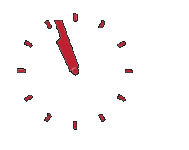
![]()

![]()
Firms Link for Space Manual
The US space shuttle Atlantis left the International Space Station Monday 18th February, after a nine-day visit that gave the laboratory a European annex -- and a French scientist to bolster its crew.

After closing the hatch on Sunday, shuttle pilot Alan Poindexter gently unlocked latches and released powerful springs that pushed the spacecraft away from the station.
"Alpha, Houston -- physical separation confirmed," shuttle commander Stephen Frick radioed to mission control in Houston, Texas.
Once at a safe distance, Atlantis fired up its engines and executed a fly-around the ISS so that the shuttle's protective tiles could be photographed and inspected for possible damage
Two Letchworth companies, technical writers Author Services Technical of Blackhorse Road and Time Is Limited, Aerospace Consultants of Norton Way, Letchworth, combined their expertise in 2003 to produce an operations manual for this, Europe's most ambitious manned spaceflight project.
The Columbus laboratory is ESA's biggest single contribution to the International Space Station. The 4.5-metre diameter cylindrical module is equipped with flexible research facilities that offer extensive science capabilities.
During its 10-year projected lifespan, Earth-based researchers, together with the ISS crew, will be able to conduct thousands of experiments in life sciences, materials science, fluid physics and a whole host of other disciplines, all in the weightlessness of orbit.
The Columbus laboratory is crammed with scientific equipment designed to research a whole host of things, including the effects of long-duration space flight on the human body and the exploration of the strange behaviour of weightless liquids.
Results of the first are expected to provide an increased understanding of age-related bone loss, balance disorders and other ailments on Earth.
The latter could bring far-reaching benefits on Earth, including better ways to clean up oil spills, for example, and even improved manufacture of optical lenses.
Gerry Gentle, director of AST, said: "The art is producing the information in a clear and unambiguous way and remembering that access to the document is usually a last resort so ease of retrieval is essential.
He added: "It now has everything in there to operate and maintain the module but we had to start from scratch and work out what the technical issues were and what the readable issues were. Every single word in that document had to be read and understood by us."
Ian Schofield, director of Time Is Ltd, said: "The documentation of how to run this thing had been written by many individual engineers from different countries so their English was of different standards, as were their methods of putting things together."
The 10,355 page instruction manual for the laboratory took three people eight months to complete.
It was originally written using Word 97 and copies, converted to disc, will be available on board the Columbus, as well as on the ground in Oberpfaffenhofen Germany.
Subsequent and ongoing work in the Space Industry includes support to EADS Astrium for the UK MoD spacecraft Skynet 4 & 5 and the United Emirates spacecraft YAHSAT.